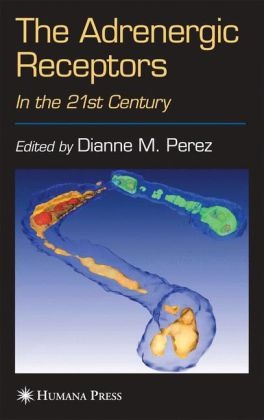Read more
The adrenergic receptors control many critical functions of the heart, kidney, brain, and all organs under autonomic control. Today significant opportunities exist for molecular and genetic analysis of their function and signaling pathways. In The Adrenergic Receptors: In the 21st Century, senior scientists who have developed novel molecular approaches describe the state-of-the-art understanding of the structure and function of the adrenergic receptor subtypes, as well as the role played by these receptors in physiological and pathophysiological settings. Topics range from structure-function studies and the imaging of adrenergic receptors to the use of genetically altered mouse models and pharmacogenomics. Many of the methods described can be applied to characterize any receptor of interest. Highlights include a survey of the knockout and overexpressed mouse models, a review of the new ways that adrenergic receptors can signal, and the effects of polymorphisms on both clinical outcomes and potential gene therapy applications. Additional chapters address modern techniques for assessing adrenergic function, such as fluorescent labeling and microarrays, and offer an insightful historical survey of the extraordinary progress made in our understanding of these receptors in the twentieth century.
Comprehensive and authoritative, The Adrenergic Receptors: In the 21st Century provides researchers-through its side-by-side comparison of all the adrenergic receptors (a1, a2, and b) and their subtypes-with an excellent survey of the field, including the rationale for how best to design better drugs for control of the heart, blood pressure, and related pathophysiological systems.
List of contents
Part I: Historical Perspectives
Adrenergic Receptors: Historical Perspectives From the 20th Century
David B. Bylund
Part II: Structure-Function
Ligand Binding, Activation, and Agonist Trafficking
Angela M. Finch, Valerie Sarramegna, and Robert M. Graham
New Signal Transduction Paradigms
Kenneth P. Minneman
Regulation of the Cellular Localization and Trafficking of the Adrenergic Receptors
Michael T. Piascik, Mary Lolis García-Cazarin, and Steven R. Post
Adrenergic Receptors in Clinical Medicine
Martin C. Michel and Paul A. Insel
Part III: Imaging Adrenergic Receptors and Their Function
Use of Fluorescent Ligands and Receptors to Visualize Adrenergic Receptors
John C. McGrath and Craig J. Daly
Localization of Adrenergic Receptor Subtypes and Transgenic Expression of Fluorescent-Tagged Receptors
Dianne M. Perez
Part IV: Genetically Altered Mouse Models
The a1-Adrenergic Receptors: Lessons From Knockout
Paul C. Simpson
The a2-Adrenergic Receptors: Lessons From Knockouts
Christopher M. Tan and Lee E. Limbird
The b-Adrenergic Receptors: Lessons From Knockouts
Yang Xiang and Brian Kobilka
Lessons From Overexpressed Mouse Models
Cinzia Perrino, Liza Barki-Harrington, and Howard A. Rockman
Adrenergic Receptor Signaling Components in Gene Therapy
Andrea D. Eckhart and Walter J. Koch
Part V: Pharmacogenomics
Genetic, Molecular, and Clinical Characterization of Adrenergic Receptor Polymorphisms
Stephen B. Liggett
Microarray Analysis of Novel Adrenergic Receptor Functions
Boyd Rorabaugh, June Yun, and Dianne M. Perez
Part VI: Summary and Future Endeavors
Summary and Future Endeavors
Dianne M. Perez
Index
Summary
An authoritative review of the current state-of-the-art understanding of the structure and function of the adrenergic receptor subtypes, as well as of the role played by these receptors in physiological and pathophysiological settings. Topics range from structure-function studies and the imaging of adrenergic receptors to the use of genetically altered mouse models and pharmacogenomics. Highlights include a survey of the knockout and overexpressed mouse models, a review of the new ways that adrenergic receptors can signal, and the effects of polymorphisms on clinical outcomes and on potential gene therapy applications. The side-by-side comparison of all the adrenergic receptors (a1, a2, and b) provides the reader with an excellent survey of the field, including the rationale for designing better drugs to control blood pressure and heart function.
Additional text
From the reviews:
"...useful to anyone interested in adrenoceptor physiology/pharmacology or in the design of drugs interacting with the receptor or its signal transduction pathway." -Journal of Medicinal Chemistry
"Dianne Perez has assembled a number of important contributors to the research area and grouped the 15 chapters into six parts. … many MDs, biologists, and pharmacologists will find the book … appealing, as the receptor class is involved in numerous cardiovascular and pulmonary diseases." (Boris Schmidt, ChemMedChem, Issue 1, 2006)

